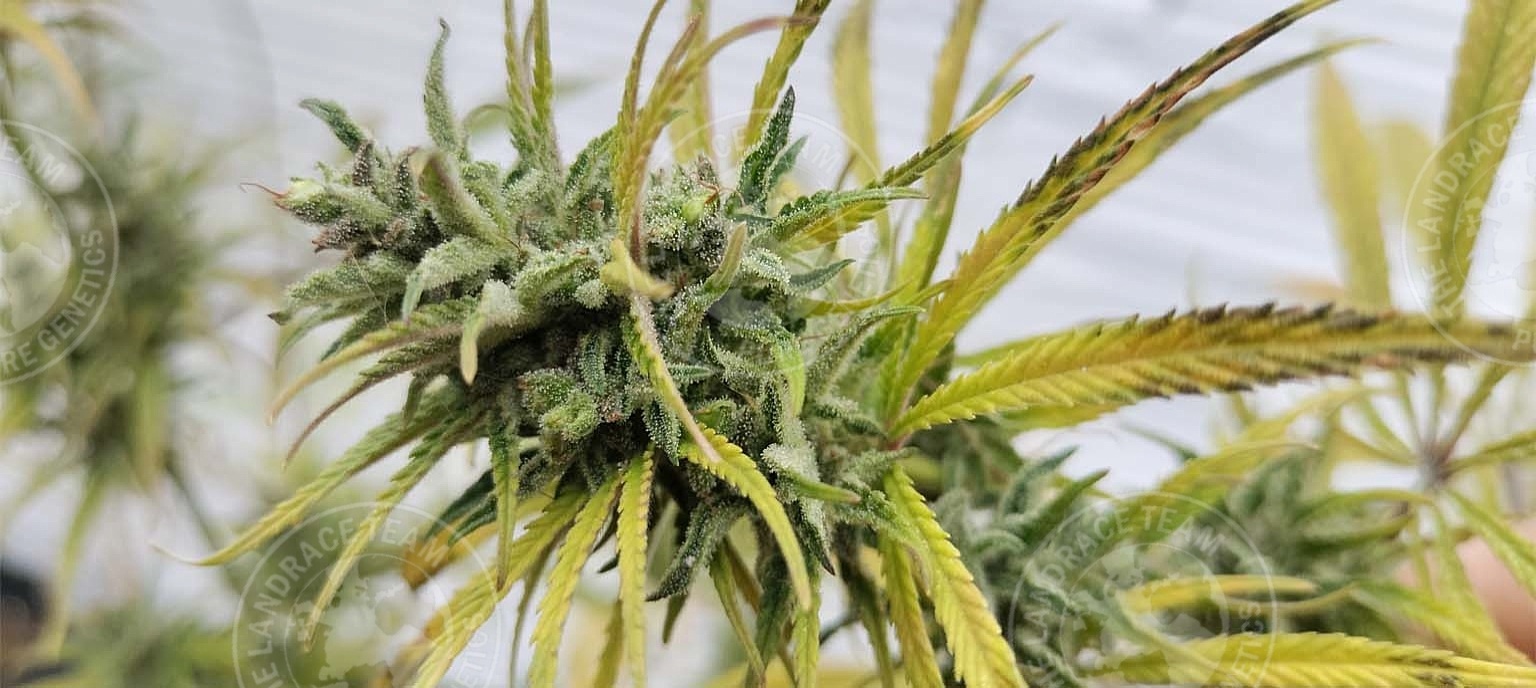Genetics: Mexican
Appellation: Mexican Death Sativa
Plant Height: 120 to 170 cm (4 to 5.5 ft)
Vegetative Stage: 13-18 weeks
Flowering Stage: 12 (min)-16 (max) weeks
Aromas: sweet chamomile, citrus, and cedar
Flavour: woody, citrus
Effects: power, long-lasting, euphoric, psychoactive
Yield: medium-high
Phenotypes: 4 observed phenotypes
Growing altitude: 2700 m.a.s.l. (8800 ft)
Characteristics: highly resistant to pests and extreme drought
Grow type: outdoor, greenhouse, indoors
Mexican Death Sativa is a sativa-dominant cultivar that exhibits a slender, symmetrical growth architecture, with medium-sized internodes and slender yet consistent stems. The foliage consists of lanceolate leaflets with serrated edges, which develop yellowish pigmentation at the tips during maturity. Under optimal growing conditions, it reaches an average height of 180 to 200 cm (5.9 to 6.5 ft). The inflorescence features voluminous calyxes and an aerated structure, with intermediate trichome density.
The vegetative cycle does not exceed 18 weeks, followed by flowering of approximately 16 weeks in the later phenotypes. The organoleptic profile, determined by its terpene composition, highlights monoterpenes and sesquiterpenes responsible for dominant notes of sweet chamomile (Matricaria chamomilla) and cedarwood (Cedrus spp.), accompanied by a citrus undertone. The THC content is high, producing a high-intensity, long-lasting psychoactive effect, with a final phase of muscle relaxation without complete sedation; however, higher consumption may intensify the narcotic component in the following hours at the end of the effect.
NOTE:
The Mexican Death Sativa is believed to have originated from a cross between two landrace varieties from two Mexican states, namely Guerrero and Michoacán. While the strain’s name doesn’t directly reference a specific state, its roots trace back to Guerrero and Michoacán, both located along Mexico’s Pacific coast and known for historic cannabis cultivation.
